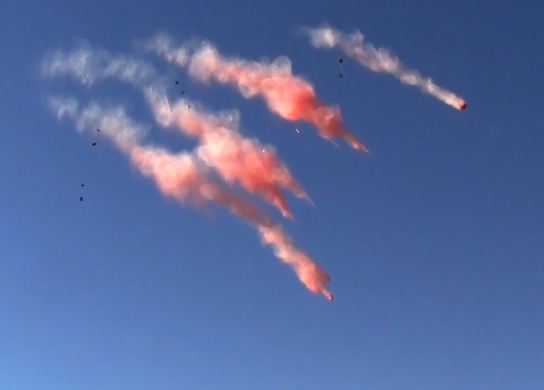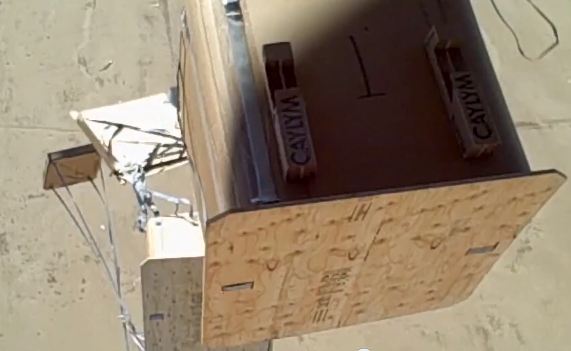2 p.m. EDT August 18, 2021
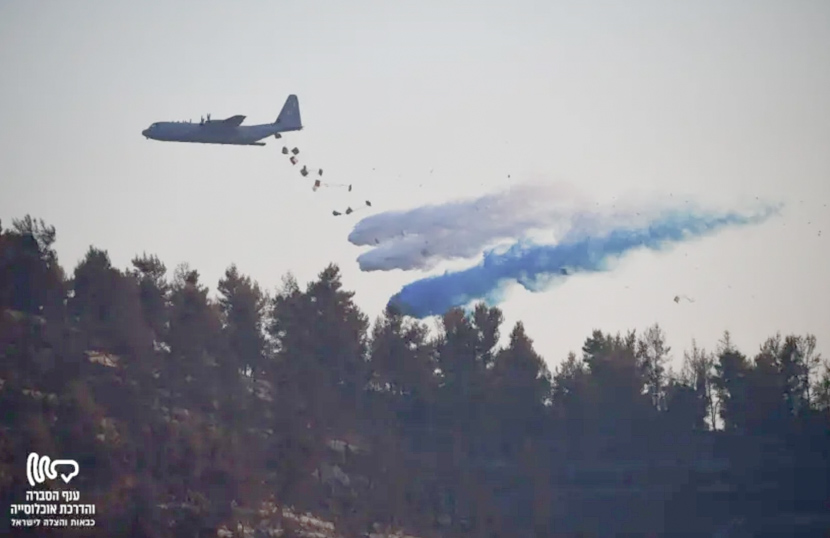
Firefighters in Israel used a C-130 to drop boxes of water on a large fire Jerusalem this week.
The fire was very large, compared to other fires in the country, and burned 6,000 acres. More than 1,500 firefighters assisted for three days before they stopped the spread.
We are working on getting confirmation, but the photo at the top of this article shows what appears to be either PCADS or Caylym/Guardian water boxes being dropped on the fire by a C-130.
UPDATE at 7:52 p.m. EDT August 18, 2021. We heard from Rick Goddard of Caylym who told us the boxes were their products. He said 16 of the Guardians holding a total of about 4,200 gallons were loaded into the C-130, but the crew of the aircraft decided to drop them in two passes of 8 boxes each. The containers all had a "foam additive" and some had blue dye. Mr Goddard said, "The Guardian has been employed over wildfires every year starting in 2017 in the Carpathian Mountains of Romania, then Attica fire in Greece, and last year in the Peruvian Andes and Amazon basin. This year so far on fires in Macedonia, Peru and Israel."
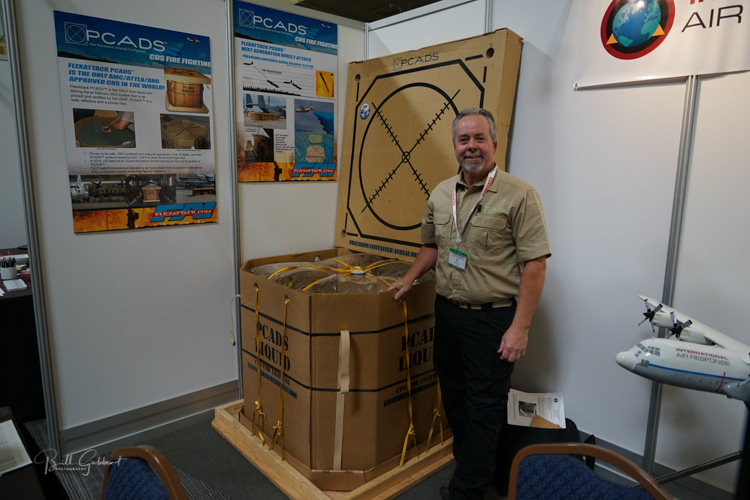
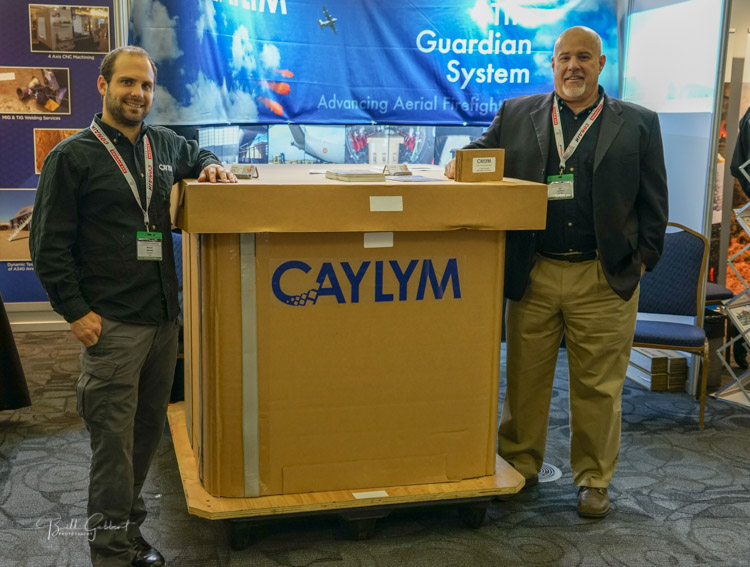
We wrote about the Caylym/Guardian boxes in 2013 on Wildfire Today.
The system consists of containers constructed of cardboard, plywood, a plastic bladder, and dozens of yards of straps. They hold 264 gallons each and are designed to be carried in military aircraft such as the C-130 or C-27 using the standard cargo system. The containers when empty weigh 100 pounds. After they leave the aircraft the container lids, attached by four straps, separate, and act like a parachute. The straps then put pressure on the plastic bladders, ripping them open, allowing the liquid to be dispersed. The 100 pounds of the other components, the plywood, and cardboard, fall to the ground tethered by the nylon straps. The plastic bladder, hopefully empty, falls separately.
If these were ever actually used on a wildfire, there would have to be an even greater emphasis than usual on removing firefighters and other personnel from the target area than there is now when only liquids fall from the sky. If a box failed to disperse the liquid, it would be deadly, as could be the plywood if the box was empty. In addition, the owner of the land would either have to be OK with leaving the debris from the containers in place after the drop in perpetuity, or crews would have to search the area and carry it out for disposal in a landfill. Debris removal would need to be included in the estimated costs of using a system like this, which could be difficult or even impossible in some areas, complicated by topography and vegetation. Depending on the climate, it could take many years or decades for the plastic bladder, plywood, cardboard, and straps to decompose if it were not removed.

Here is an eight-second video showing a box drop in Israel. It was uploaded to YouTube August 17, 2021.
In addition to dropping water, the Caylym system delivers the plastic bladder, plywood, cardboard, and straps.
In addition to the boxes, Israel has a fleet of 14 AT-802Fs managed by the Israeli National Police. We have a report that after the fire broke out the fire fighting agency contracted for six additional aircraft from Chim Nir to work with the Air Tractors. They were PT6-powered Turbo Thrush aircraft that are normally used for aerial spraying but had a fire fighting role before they were replaced by the Air Tractors.

